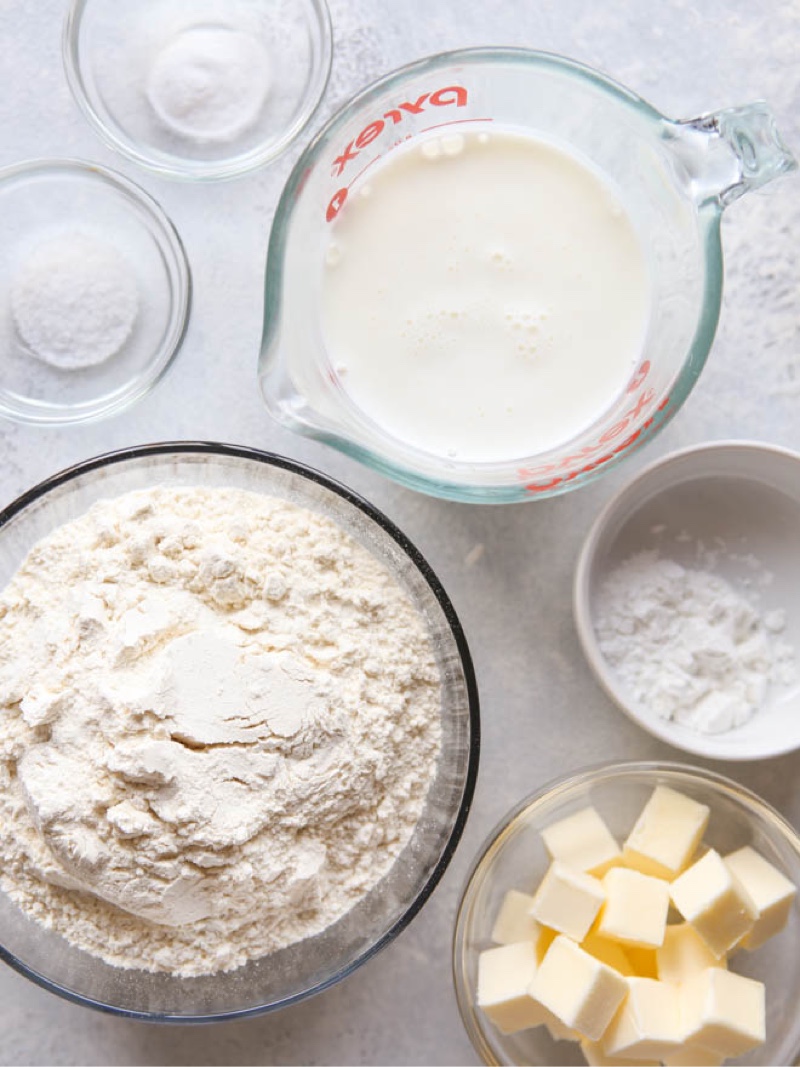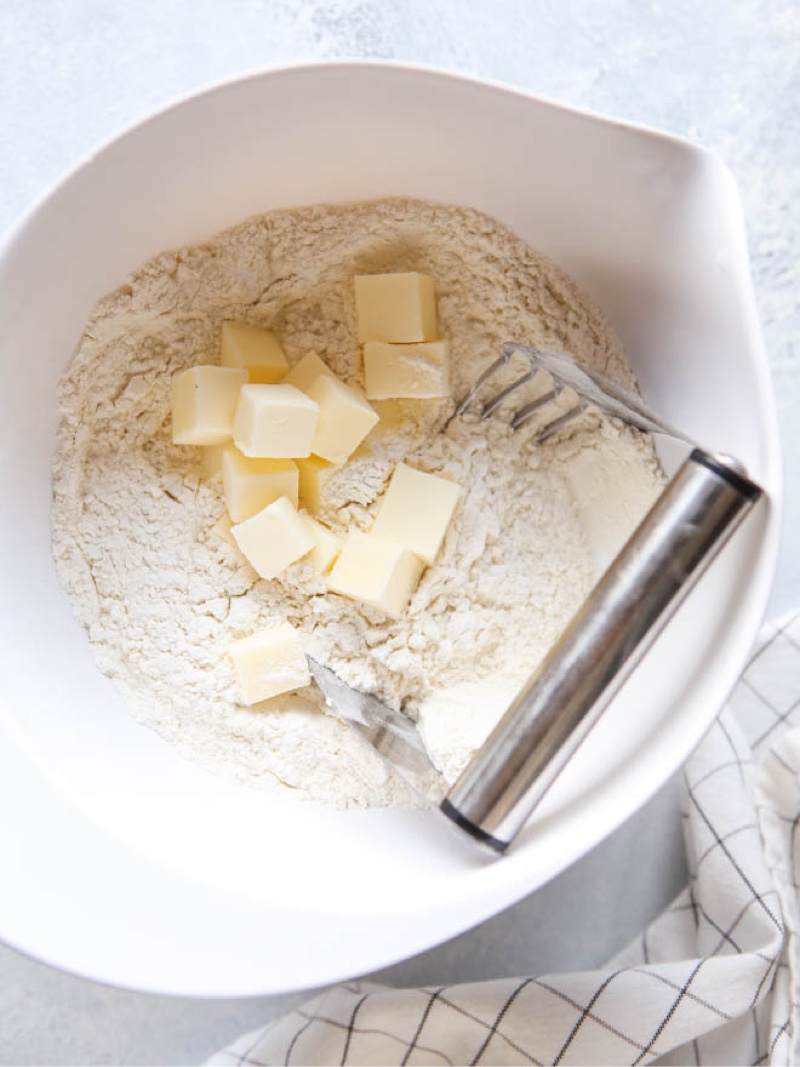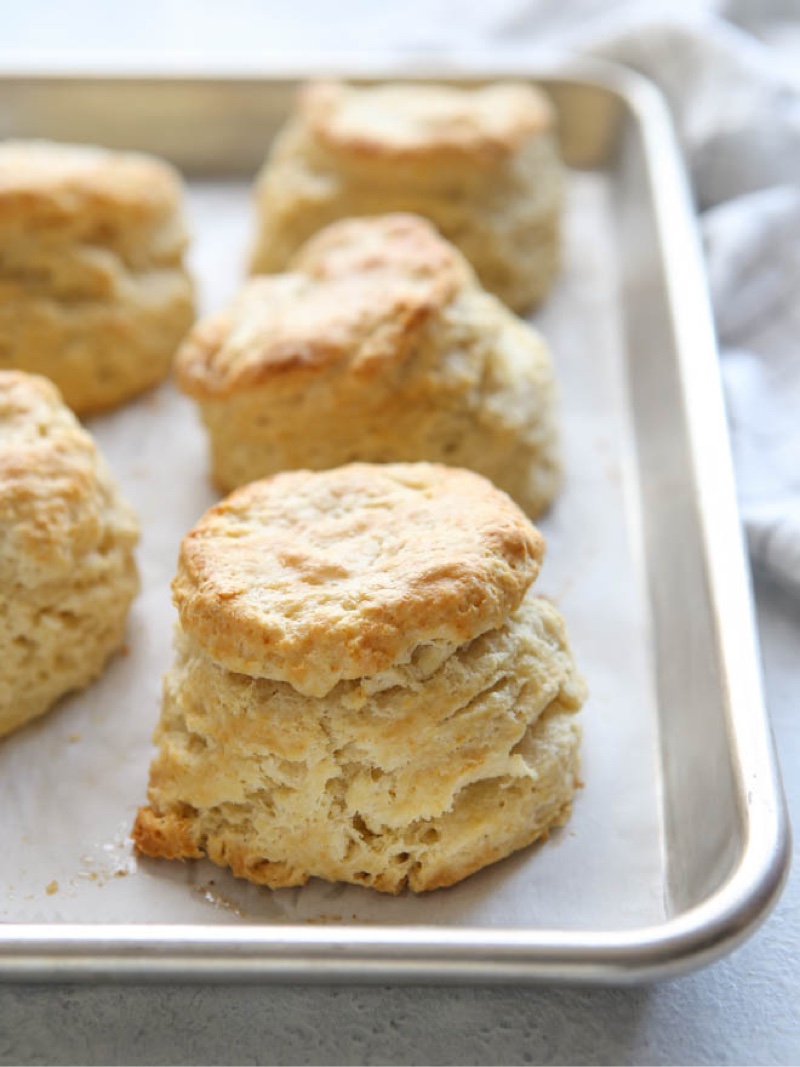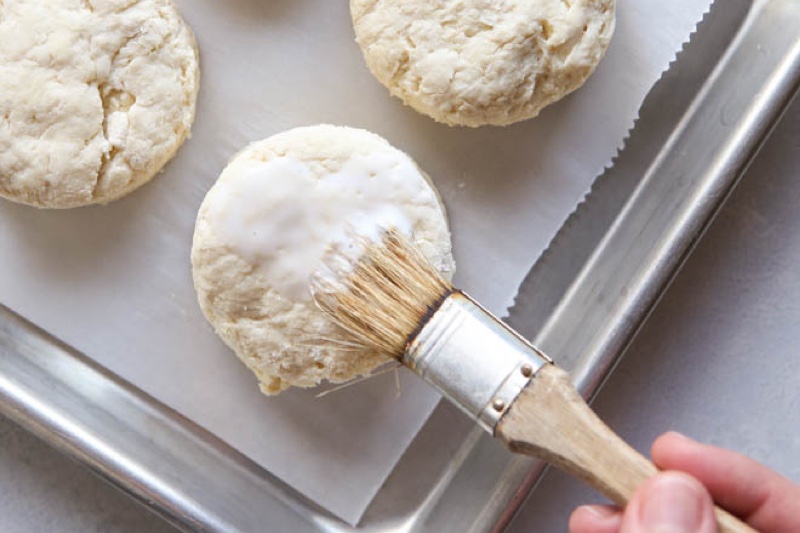When it comes to baking, strenuous effort does not always translate to quality. Biscuits are a great case in point; making tender, flaky, buttery biscuits doesn’t require fancy gear, fussy ingredients, loads of time, or a culinary school degree. In fact, biscuits can be absolutely transcendent when made with a light touch and just a few ingredients.
A heritage American baking recipe, biscuits come in many different formats, with differing ingredients and methods depending on the region in which they’re made and consumed. Some biscuits are made by the “drop method,” in which biscuit dough is dropped from a spoon onto the pan to bake, while others are cut by either a knife, biscuit-cutter (an especially-sharp cutting shape), or a simple drinking glass. Some biscuit-bakers use buttermilk for tang and others use sweet potatoes for a boost of natural sugar. Some get their fat content from heavy cream and others (the best ones, we believe!) use straight, high-quality Challenge Butter.
But no matter where they’re made, all biscuits adhere to a simple formula that includes:
- a fat like heavy cream, suet, or butter
- milled grains or flour
- some kind of liquid
- and at least one leavening agent


Our Easy Butter Biscuits are a great way to see these elements in action. If you’ve never tried to make biscuits, start with this recipe. In this case, butter keeps the biscuits moist, plus all-purpose flour for the grains, half-and-half for the liquid and both baking powder and eggs for leavening. The formula here is simple and effective, with the option to form the biscuits into rounds or drops. (We like rounds for breakfast sandwiches, drop biscuits for serving with soups, stews, or on top of casseroles like our 30-Minute Chicken Pot Pie.)
Once you’ve mastered biscuits you can riff on the original recipe. Serve Dill Biscuits on a spring charcuterie platter, Cheese and Green Onion Biscuits with a pot of chili, and Chocolate Shortcake with Mixed Berries after a summer barbecue. As with all of our “Mastering” recipes, once you have the basics down, you can start to get creative.


Before you launch into a biscuit-baking project, keep these helpful tips in mind:
Chill out.
Using cold butter is the most important tip for making biscuits. When butter is cut into small pieces and incorporated into flour to the consistency of course crumbs, those crumbs melt during the baking process, leaving pockets of air that equate to the holy grail of biscuit characteristics: flakiness.
Slow down.
No one ever made a great biscuit by overworking the dough. When you integrate your wet and dry ingredients, only mix to barely moisten, and stop.
Use the very best.
A biscuit is never better than its ingredients, so when you only use a few, every one of them shines through. Buy the best flour you can find, the best dairy, fresh baking powder, and Challenge Butter.
Try something new.
Within the parameters of a good biscuit recipe, there is a lot of room for experimentation. For instance, try cutting your all-purpose flour with pastry or cake flour. Or try cutting your butter with heavy cream or buttermilk.
Practice, practice, practice.
The best way to bake a better biscuit is to try again and again, over and over, until you gain a sixth sense for the right amount of mixing, the right way to shape them, the aroma from the oven that tells you they’re done. The result will be a whole lot of biscuits and increased know-how. Win-win.

